Red-Belted Bracket
A majestic, colourful perennial bracket fungus mostly found on conifers.
| Mushroom Type | |
| Common Names | Red-Belted Bracket (EN), Carn Pinwydd (CY), Pniarek Obrzeżony (PL), Szegett Tapló (HU) |
| Scientific Name | Fomitopsis pinicola |
| Synonyms | Pseudofomes pinicola, Fomes pinicola, Polyporus pinicola |
| Season Start | All Year |
| Season End | All Year |
| Average Mushroom height (CM) | |
| Average Cap width (CM) | 10–40 |
Fruiting Body
Perennial, 10–40 cm wide and 5–15 cm thick, shelf-like or hoof-shaped, rarely resupinate. Widely attached to its substrate, without having a stem (sessile).
Upper surface (skin): zonate, smooth, glabrous (shiny, almost laccate), variable in colour. It might have some yellow, orange, red to dark blueish to black on it, the central part is often covered with a dark resinous layer. Margin thick, rounded, white when young, turning orange to red with age.
Pores
Tubes 2–8 mm long, concolorous with the flesh. Pores 4–6 per mm, roundish, white when young, turning yellowish with age. Often secreting colourless droplets (this phenomenon is called: guttation).
Habitat
Growing on dead standing or lying trunks or stumps of conifers, also on hardwoods, rarely on living trees too. It is necrotrophic parasite, causing cubical brown-rot.
Possible Confusion
As the genus’ name predicts, it has a rather similar appearance to Hoof Fungus, specimens of the two species are often confused.
Hoof Fungus (Fomes fomentarius), pictured, grows on hardwoods, preferably but not exclusively on beech and causing white-rot. It might have really variable appearance, but it has grey and brown based colours on its upper surface (skin), and its pore surface is ochre to grey, not white to yellowish cream.
Taste / Smell
Inedible. Smell and taste not distinctive.
Frequency
Common and widespread. It is one of the most common wood inhabiting (brown-rot) species in conifer forests in Europe.
Spores
Spore print is white. Spores are thin walled, cylindrical to ellipsoid, smooth, colourless (hyaline) and inamyloid (means: their spore wall doesn’t contain starch).
Other Facts
The name of the genus Fomitopsis means ‘similar to Fomes‘ aka Hoof Fungus, while the epithet (the 2nd part of the scientific name) refers to its strong preference of pines (Pinus spp.).
Fomitopsis pinicola is the type species of genus Fomitopsis. Until recently we believed our European Fomitopsis pinicola is native to the American continent too, but molecular studies showed it is a different species, called Fomitopsis mounceae. It might be confusing that F. mounceae is called Red-Belted Polypore in North America.


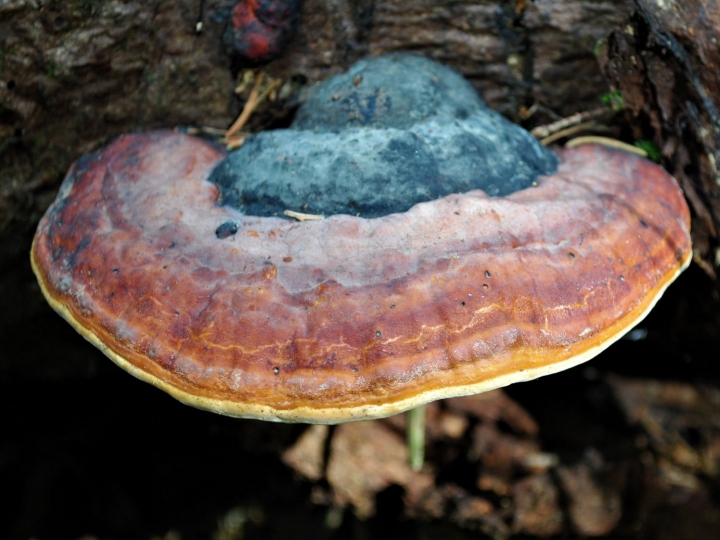














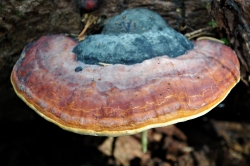
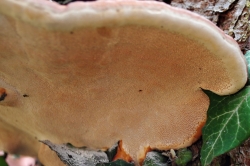
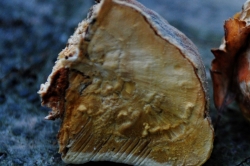
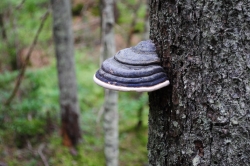
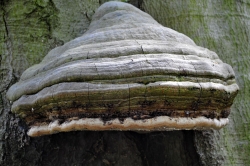





COMMENTS